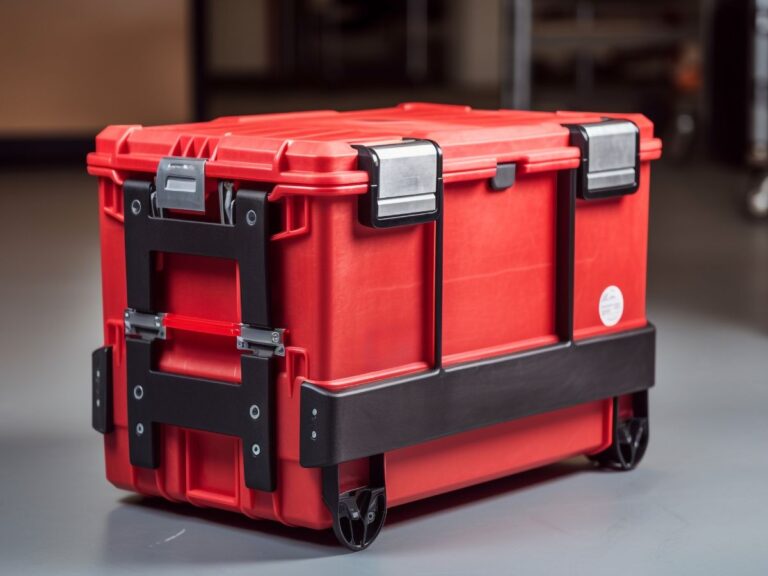Are you tired of battling clutter or yearning for a...
Read MoreJigsaw Vs. Circular Saw: Which One Should You Choose?
- WWPN Staff
If you work in the construction industry, you’ve probably used circular and jigsaw. But you must have wondered which instrument is better for a certain task—a jigsaw or a circular saw. Both have different functions, and often their purposes intertwine since they perform vertical cutting processes.
You must wonder, “If both serve similar purposes, which tool would be the best to solve your purpose?” For a direct comparison, you must also consider the benefits and drawbacks of each tool.
The vital question becomes – Which tool will deliver the best results for custom woodwork? Well, jigsaws and circular saws are both essential items for any woodworker. They are rather diverse tools; therefore as a professional, you need to be fully informed and skilled with them.
Furthermore, you need to understand the differences between the two to make an informed decision regarding the best tool for your work.
What Is A Jigsaw?
A jigsaw is a sharp power tool that cuts curves in wood and other materials precisely. It is a little hand-held saw that chops wood in an upward and downward motion. As a result, unlike other instruments, it can efficiently cut intricate patterns and shapes.
Further, you can access a variable speed range that you can adjust according to the material. However, it would help if you took essential measures like attention to detail for neatness and precision. It would help if you had steady hands as they will provide direction to the jigsaw.
Further, pendulum jigsaws move in back and forth motion apart from the up and down movement. This reduces the worker’s chances of mistakes as only a small amount of blade is in contact with the wood at once. Further, a jigsaw can cut various materials like metal, plastic, ceramics, and wood.
What Is A Circular Saw?
A circular saw is an electric hand tool that cuts wood in straight lines and is similar to a table saw. Instead of cutting curved or round patterns, circular saws work best when cutting quick, straight lines. The circular blade spins and cuts the wood in an upward direction.
Circular saws are swift and quick, allowing for completing vast amounts of work quickly. You can always expect high precision while working with a circular saw. It also has an on/off trigger switch, and the guards protect the user from the operating blade.
Further, the circular flat blade in circular saws can cut through wood, metal, plastic, or ceramics, depending on the blade type. There are special blades for every material. For instance,
- Metal – The metal cutting blades have no teeth
- Wood – The wood-cutting blades are specialized for ripping and have small teeth for crosscutting
- Plastic – The plastic cutting blades have a large number of teeth
What Are The Differences Between Jigsaw And Circular Saw?
A jigsaw and a circular saw have two similarities –
- They are used to cut wood and other materials.
- Both are handheld power tools.
Apart from these, both the cutting tools differ in look and functionality based on the user’s needs.
- Structure – A jigsaw features a blade that travels up and down in a straight, vertical line. The thinness of the blade allows it to efficiently cut out curves. A circular blade of a circular saw revolves while cutting straight lines.
- Speed – Jigsaws are slower than circular saws. However, certain jigsaws come with a speed meter for you to choose from based on the material.
- Neatness – A circular saw always comes out on top when it comes to cutting neatly. It moves more quickly than a jigsaw.
- Power – Circular saws are higher-powered saws than jigsaws. The bigger blades allow you to cut through large wood blocks and even concrete blocks. It can hold more RPM and has depth adjustment options.
- Blade durability – Jigsaw blades are narrow and delicate. Hence, they tend to break easily. On the other hand, circular saws have durable and robust blades and last longer than jigsaw blades.
When Should I Use Jigsaws?
You can use a jigsaw while dealing with the following situations –
- Curves – If you are looking to make a curved cut.
- Materials – When you are involved in cutting a variety of materials
- Tight spots – A jigsaw can enter the tightest places and areas to make cuts.
However, it would help if you tried to avoid a jigsaw in the following situations –
- Thick materials – A jigsaw cannot efficiently cut through thick materials like wood. It might even damage the blade for good.
- Deep long cuts – Although a jigsaw can cut out straight lines, it cannot cut neat and deep lines.
When Should I Use Circular Saws?
Professional carpenters usually use circular saws because they are great for repetitive cutting. You can use it in the following situations –
- Crosscuts and rip cuts – Circular saws are great for cross cuts and rip cuts. You will get a neat and precise line.
- Plunge/Bevel Cuts – If you cannot cut at the edge of the board, you can turn on the saw and lower the blade at an angle to slowly cut the material. You can also quickly go for bevel cuts with a circular saw.
- Heavy cuttings – Circular saws are great for cutting heavy wood and concrete blocks for large-scale jobs.
The variety of blade sizes and adjustability make it a versatile cutting tool.
However, it would help if you tried to avoid a circular saw in the following situations –
- For carved shapes – A circular saw cannot cut out carves and complex shapes because of the speed and size of the blade.
- Noise – A circular saw is noisy and might disturb the neighbors. Try to avoid it if you are working in a quiet neighborhood.
Which Saw Is Right For You?
Circular saws and jigsaws are two types of cutting equipment with distinct uses. Generally, we cannot choose one over another. However, you must consider each tool’s benefits and drawbacks before selecting the one best suited to your construction needs.
Advantages of Jigsaws
A jigsaw works best for cutting curved forms and intricate patterns. The blades can work their way to perform the intricate cuttings in the kitchen around vertical pipes and countertops.
The most significant advantage of using a jigsaw is that it is easy to handle and is lightweight. Jigsaws are suitable for children and can even be used to make the perfect Halloween pumpkins.
Disadvantages of Jigsaws
On the other hand, jigsaws have smaller and narrower blades, making them prone to damage. Although these blades are budget-friendly, you might spend a lot more replacing them than the actual jigsaw value in the long run.
Further, you will not be able to cut out perfect straight lines. With practice, you will be able to get close enough.
Advantages of Circular saws
A circular saw is a powerful cutting tool ideal for cutting straight lines in seconds. Further, the blades are strong and durable and serve best for dense and thick woods, especially in construction.
Moreover, neatness and precision are guaranteed when using circular saws. Additionally, jigsaws do not produce much dirt and debris while cutting. There is not much cleaning to be done post-work.
Disadvantages of Circular saws
On the other hand, circular saws are unable to make curved cuts. They are heavier and produce a loud noise. Hence, you have to be very careful when around kids and neighbors. Further, the blades are heavy and sharp.
There have been incidents of people cutting their hands while using a circular saw. Hence, there is a need for higher safety standards while using a circular saw. Moreover, circular saws and their blades are expensive.
The Final Deciding Factor – A Jigsaw Or A Circular Saw
The right cutting tool for you is the one that will cater to your needs. Hence, you can keep the following two pointers in mind –
- If you’re doing some DIY work or updating some old furniture in your basement, a jigsaw will come in handy. It works well for tiny tasks and is useful when you want to let your creativity run wild. If your children enjoy doing crafts, they may use it with adult supervision.
- If you want to rip sheets of plywood and cut through heavy wooden planks to frame a house or garage, go for a circular saw.
The Bottom Line
In the end, the choice of tool reduces down to the type of job you want to be done. We cannot compare the tools because they serve different purposes and provide their best services in specific tasks. Neither of them replaces either.
Apart from the similarity of cutting things, they are different tools. Hence, it becomes an easy choice when choosing a jigsaw or a circular saw for your woodwork.
Finally, if you are a person who likes to indulge in DIY projects as well as heavy construction work, you can buy both tools. However, you will have to consider the budget and the return on investment.




